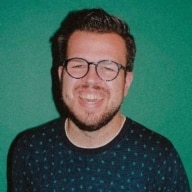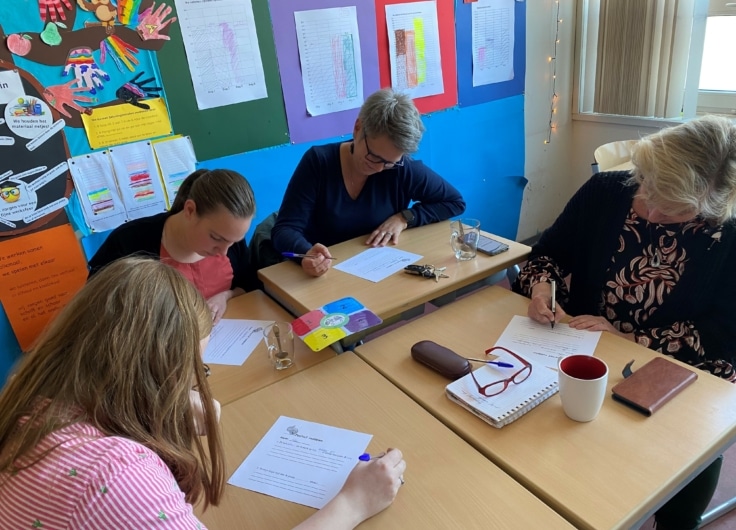Why Arts Education in Flanders Is Gaining Momentum
More and more Flemish students are opting to pursue art schooling during their secondary education. After a thorough reform and a few difficult Covid years, part-time art education is also winning favour again. Teachers and students see that their schools are keeping up with the times. ‘Parents are seeing art education as a good choice.’
‘That we’re a hippie hangout!’ ‘And only have fun!’ Demi, Selma, Emma, Emily and Noor, five students at Heilig Grafinstituut in Turnhout, who have gathered in a classroom for our Zoom conversation, don’t have to think long about the preconceptions regarding art secondary education (kunstsecundair onderwijs, KSO). ‘People think we’re very high class and are always bitching at each other,’ laughs fashion student Demi. ‘Or that we only make collages.’
‘In the second year of secondary school, when I wanted to switch from a general secondary education (algemeen secundair onderwijs, ASO, JVL) to a music education, my maths teacher said that being a musician was not a profession,’ explains Noor, who shortly after we spoke, was told she could start at the conservatory in Ghent.
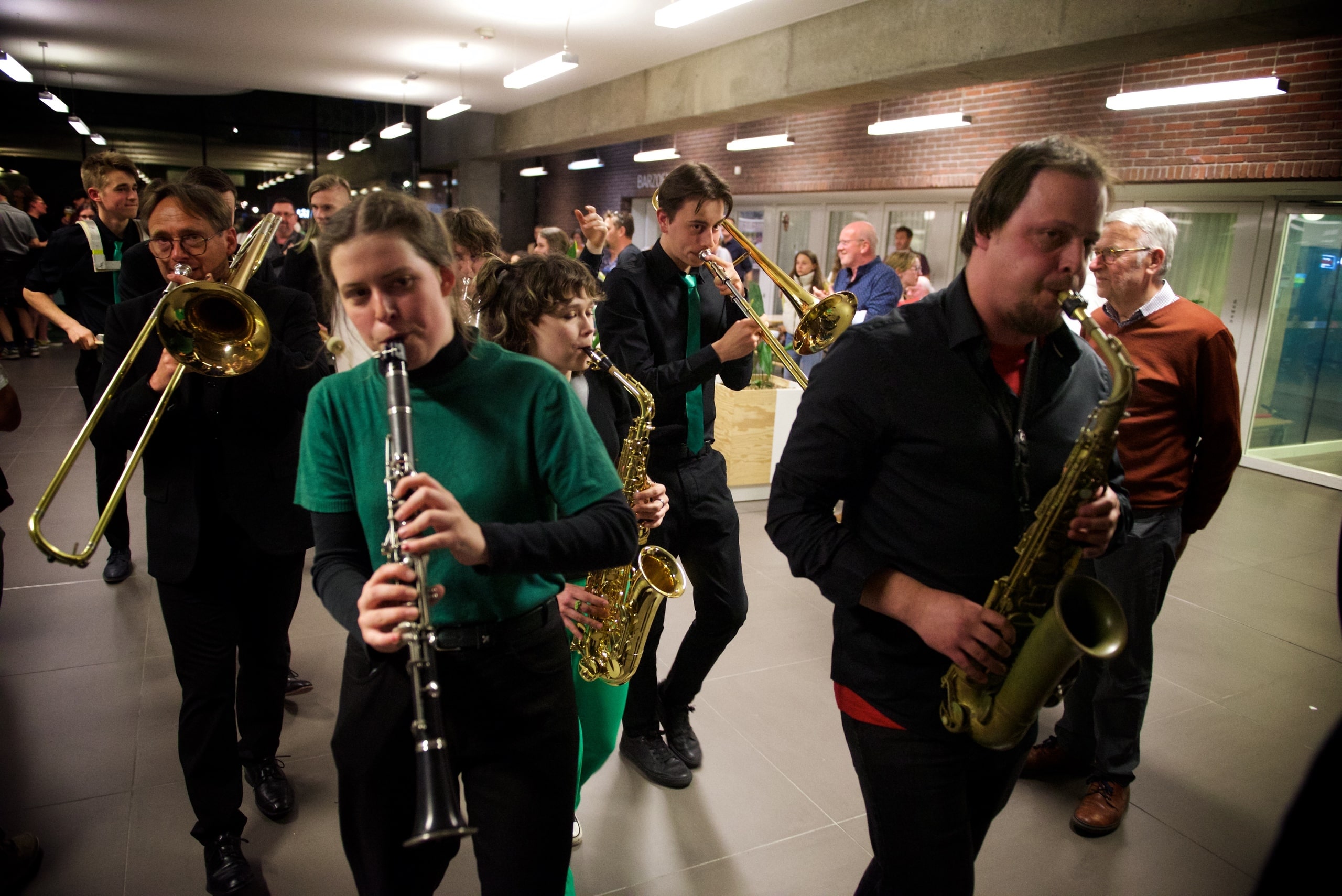
© Jan Van Kerckhoven
In addition to the still rampant clichés, there is mostly good news to report about art secondary education: it’s attracting more and more students. For the 2021-2022 school year, 7,945 students were enrolled in a KSO education (fourteen per cent more than the 6,922 enrollments in the previous school year). The number of students pursuing art schooling (6,006 enrollments) hasn’t dropped since the 2015-2016 school year. It’s striking that the number of boys has consistently remained around 2,200, while girls have accounted for the increase.
‘Initially, my parents did not agree with me enrolling in KSO, but my form master convinced them. She said you can’t stay somewhere where you can’t be yourself,’ Selma comments. For a long time, her story has been that of many whose parents did not consider secondary art education up to par. But that mentality has changed, according to Karen Verhamme. As director of the Kunsthumaniora Sint-Lucas Gent (an art secondary education school in Ghent), she sees a clear explanation for the KSO’s increase in popularity. ‘The attitude of parents towards our education has changed. In the past, students often only came to us as of the third cycle; for example, after they had tried following a schooling in general secondary education or had been nagging their parents for a while. Nowadays, our second cycle is quickly full.’
Karen Verhamme (Sint-Lucas Gent): 'People see art education as another equally good path towards a secondary school diploma'
According to Verhamme, who also heads Kunstengroep (the umbrella organisation for secondary art schools), KSO has become a positive choice. ‘People don’t see it as an education without a future, but as another equally good path towards a secondary school diploma. Our students receive a broad general education. A direction such as architecture education, for example, includes six hours of maths. The difference with, say ASO, is that for us, values such as creativity, self-reflection, dealing with feedback and questioning things play a bigger role.’
Director Joke Jacobs of the Heilig Grafinstituut agrees with her colleague: ‘Since the Covid crisis, there are more parents who put their children’s well-being and happiness first. And if those children are happy following an art education, it immediately becomes an attractive option.’ KSO student Emma, who, like Selma and Noor, gets a lot of questions from peers about her education, can attest to this: ‘I no longer dread school. I gladly get up on a school day with lots of music subjects.’
World dance
Part-time arts education (deeltijds kunstonderwijs, DKO) has also felt the consequences of the Covid crisis, but then in a negative sense. During the 2020-2021 school year, 3.5 per cent fewer educational programmes were followed than in the previous school year, largely due to adults who dropped out. The fact that, for a while, children were only allowed to practise one organised hobby per week and were therefore not allowed to go to, say, the sports club and drawing school at the same time, did not help either. The DKO has since recovered from that dip: for the 2022-2023 school year, the counter stood at more than 211,000 educational programmes followed; more than the 209,640 in the 2019-2020 school year.
Anyone who has ever followed the Flemish part-time arts education will likely remember it quite well. You went to drawing school, dance academy or music class every week and perfected what the teacher showed you. At the end of the year, there was an evaluation in the form of, for example, a concert or a dance performance in front of a jury.
That was the DKO, because in 2018 that classic model was exchanged in a new decree for a structure with more educational programmes and more opportunities to develop within that schooling. Kunstig Competent, a concept by, among others, the Limburg music teacher Erik Schrooten, became the substantive blueprint of that decree.
Music teacher Erik Schrooten: 'Teachers have developed a wider range of learning paths for different student profiles'
‘In the old DKO you chose, say, the transverse flute, and after nine years you could play the flute very well. Students who did not practise every day often quickly left the academy. I tried to make that broader,’ says Schrooten. ‘Now students are offered a wider range of basic competences. In the past, craftsmanship used to be very central in music education, for example, students who are more concerned with composing music themselves or want to grow as performers are now also taken into account. Teachers have developed a wider range of learning paths for different student profiles.’
In practice, students can now register for the direction of interpreting musician or creating musician – a distinction that did not exist in the past. Not only can you learn to play the trumpet, but you can also learn to deejay or become proficient in audio engineering. In addition to ballet and contemporary dance, you can now follow urban or world dance. ‘At the beginning of the school year, teachers discuss with their students exactly what they want to do or make. You still get good classical musicians, but you also get a movement that is much more creative,’ Schrooten sums up.
A provisional decision: with more educational programmes and flexibility, the DKO has adapted to a zeitgeist that preaches à la carte and affords people many more opportunities to develop themselves in their free time. The opposite has happened at KSO: a social climate has shifted towards the school.
Broad education
Art secondary education allows students with artistic talent to discover their passion but also offers them a broad foundation with general subjects such as languages and maths – an example is architecture education. That is exactly why it isn’t a given that KSO students will head to a conservatory or art academy after the sixth year. ‘I have classmates who want to study nursing or become a preschool teacher,’ says Noor. Emma nods enthusiastically. Someone in her class has dreams of a career as a veterinarian. Friends who have finished ASO often have no idea what to do when they’re eighteen because they haven’t had the chance to develop their passion. While I’m busy with music the entire day.’
That’s why it’s not necessarily the case that more students in KSO will lead to a higher influx in the art disciplines in higher education. For example, at the Luca School of Arts (with campuses in Genk, Leuven, Ghent and Brussels), the percentage of KSO students fell slightly last school year from 28.3 to 26.8 per cent, while PXL Music in Hasselt welcomed a slightly higher number (15.8 per cent compared to 12.9 per cent in the 2020-2021 school year). In the previous school year, there were 17 per cent KSO students – in other words, it fluctuates.
There are no figures indicating how many students in these universities of applied sciences and conservatories have followed a part-time arts education. It is also too early to take stock of the new part-time arts education, says percussion teacher Tim Ouderits of the academies in Geel and Mol. ‘The students who started their education in 2018 have four years to go now. There’s nothing indicating that fewer students will pursue professional art training in higher education, but I do notice that it has become increasingly difficult to set a single bar for a large group with different profiles and graduation options. We advise students with the ambition to participate in an entrance test to let their teacher know well in advance. In the future, it will also come down to balancing those new directions (such as audio engineering and world dance) with the educations that have existed for a long time.’
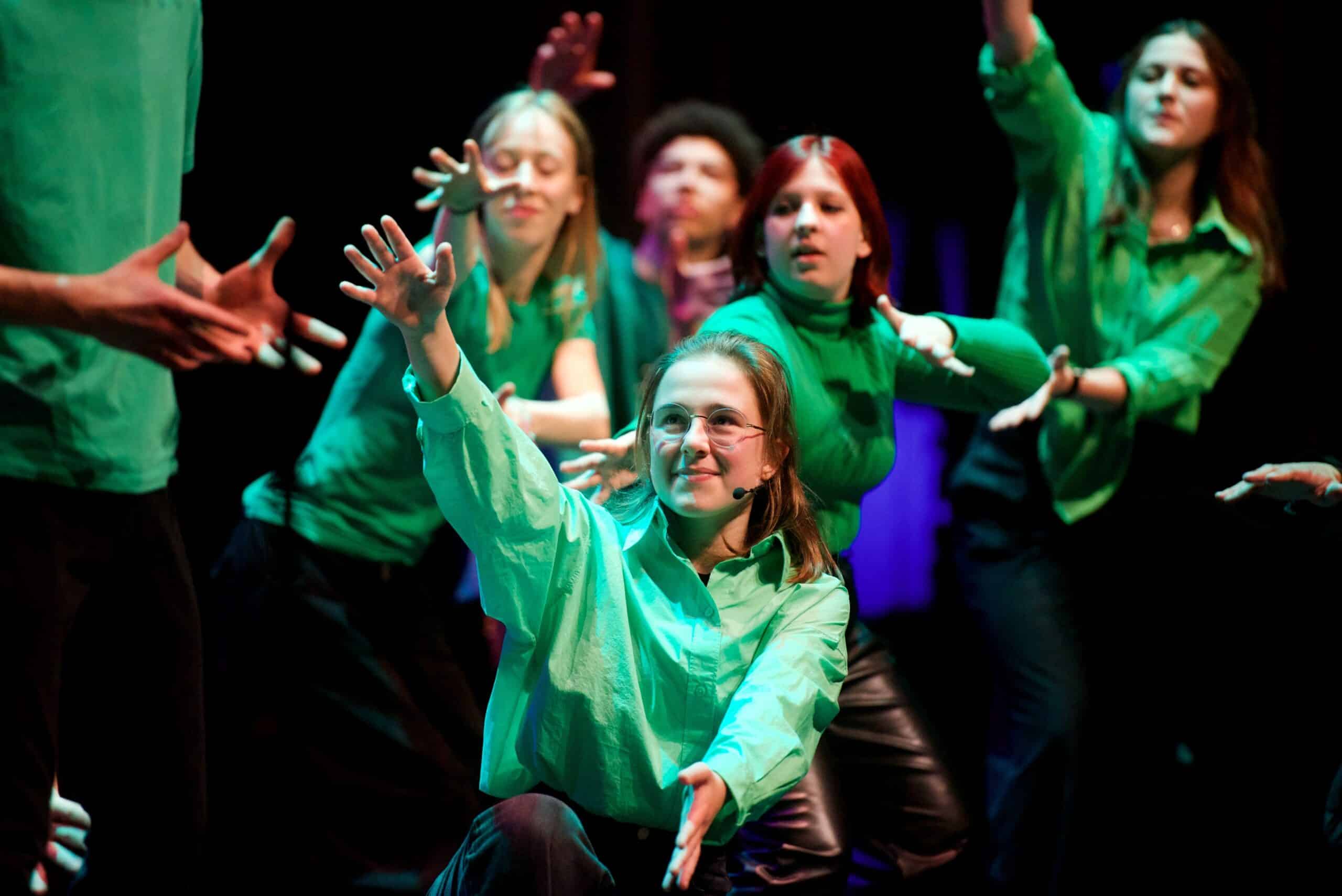
© Jan Van Kerckhoven
In concrete terms, Ouderits believes that the current budgets for DKO are no longer entirely in line with the wider range of educational programmes on offer: ‘If quality is at risk in the future, it should be possible to make adjustments.’
Paradise
Schrooten is full of praise for the resources that the Flemish government devotes to DKO: ‘Academies will always say there isn’t enough money, but compared to other European countries, this is paradise. Our system is quite unique.’ In other words, few other countries have a fully-fledged system of part-time art education which has been developed and supported by the central government. This makes DKO incredibly affordable for students. A full year of lessons costs eighty-one euros for those under eighteen, and for many, there is also a reduced rate. In the Netherlands, you will certainly be spending ‘a few hundred to a few thousand euros’ for a year of after-school art education, says Ronald Kox of the Landelijk Kennisinstituut Cultuureducatie en Amateurkunst (National Knowledge Institute for Cultural Education and Amateur Art, LKCA) in Utrecht. He cannot indicate a more specific amount, since it differs per municipality.
The Netherlands has a wide range of educational programmes, but those are more expensive than in Flanders
‘Municipalities in the Netherlands can choose to subsidise a centre for the arts, but this is often limited to pupils in primary education or young people in general. It can be the case that only a structure is set up by the government, which is then filled in by freelancers. Students or their parents then still pay the full amount,’ says Kox. ‘In recent years, huge cuts have been made on culture in the Netherlands, at all levels of government. If municipalities have to get money somewhere, it is easiest to do so in the budgets for culture.’
Because of this freedom of implementation, the wide range of educational programmes that the Flemish DKO can offer since the new decree is already very common in the Netherlands. ‘A violin course can be combined perfectly with rap or spoken word lessons,’ says Kox. However, because the lessons do not fall under the education policy area, the quality of those lessons is not monitored. In Flanders, art academies receive inspectors like all other schools. This also guarantees the quality of the DKO. In the Netherlands there is no such thing as a separate art secondary education: art is given a place through a few subjects in the secondary education curriculum, and twelve schools have united in DAMU, a foundation that aims to prepare students for a higher education in dance and music. ‘I cannot prove that this has consequences for the artistic field in the Netherlands, but I do know that higher education in the arts, and especially in music, is increasingly populated by foreigners,’ says Cox. ‘Teachers complain that Dutch students do not attain the required level.’
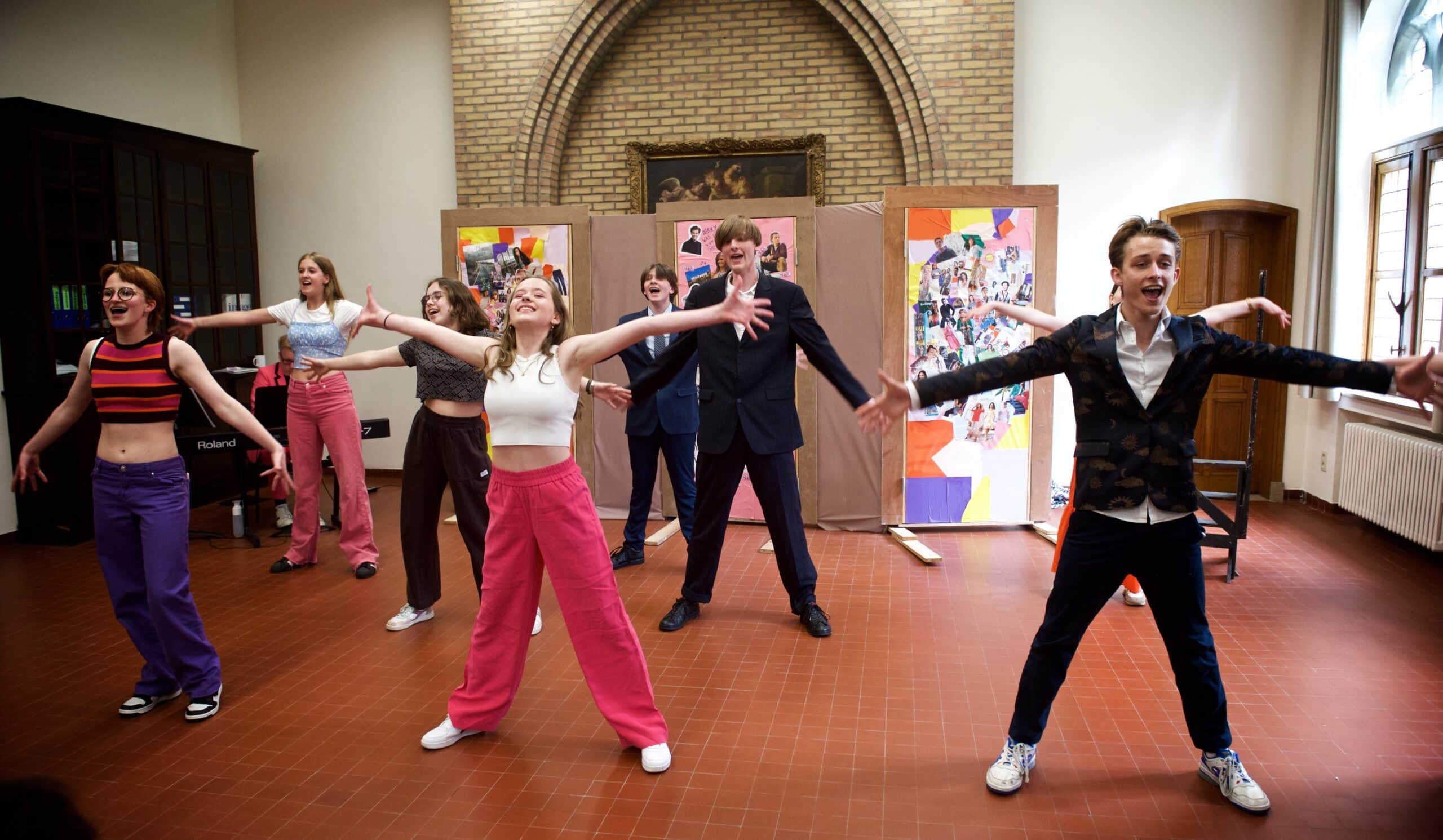
© Jan Van Kerckhoven
Work in progress
For Joke Jacobs of the Heilig Grafinstituut, the KSO’s success is no reason to rest on her laurels. ‘We have the spirit of the age, but that can always change. Additionally, students with special needs are a big challenge. We can help them, but only up to a certain level. The shortage of specific student guidance is a real problem for all schools. But then the question is still: how do we maintain the quality of our education? We can’t scale up too much because mentoring in small groups is at the core of what we do.’
Music teacher Erik Schrooten: 'We offer what society currently lacks: commitment and connection'
‘Whoever registers with us, opts for a work in progress. Today’s student no longer takes that for granted,’ says Schrooten. He believes that this is actually the strength of the DKO, and Ouderits concurs. ‘We offer what society currently lacks. I believe that people are looking for the commitment and connection which can be created through art, because many things in life are so fleeting right now. Losing yourself completely in making something is still very powerful.’

